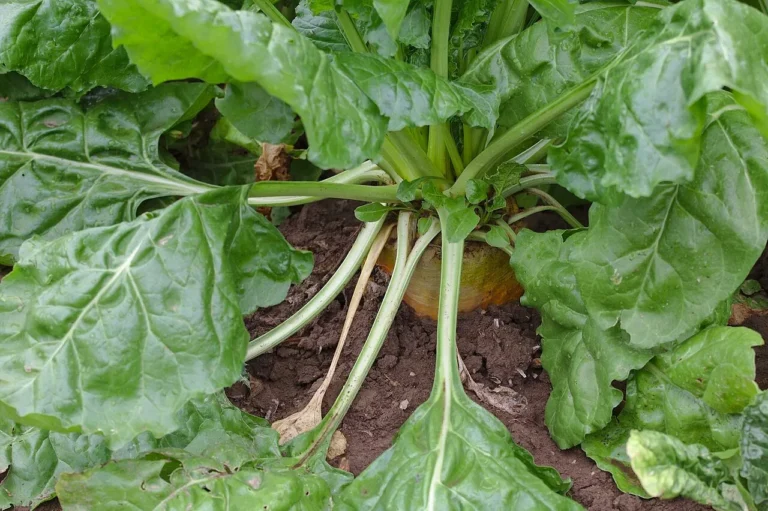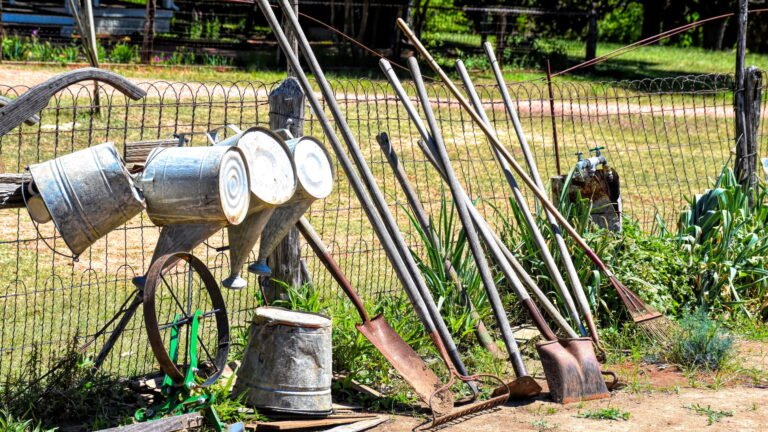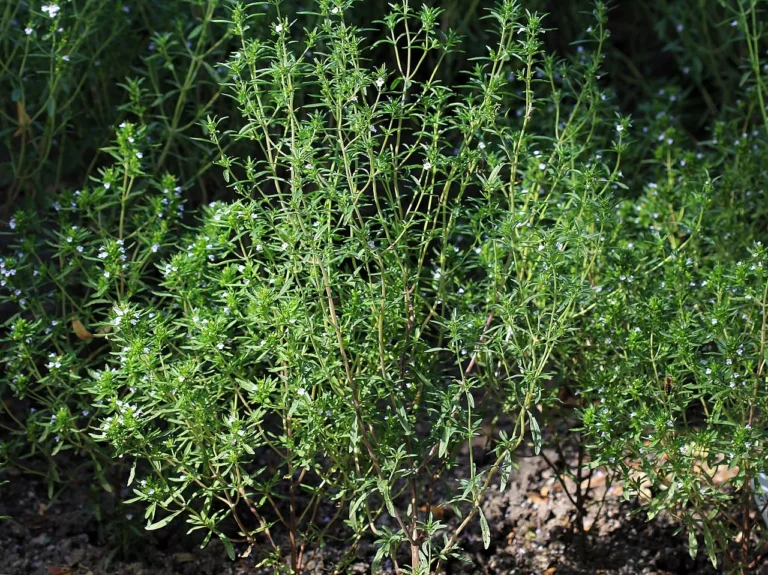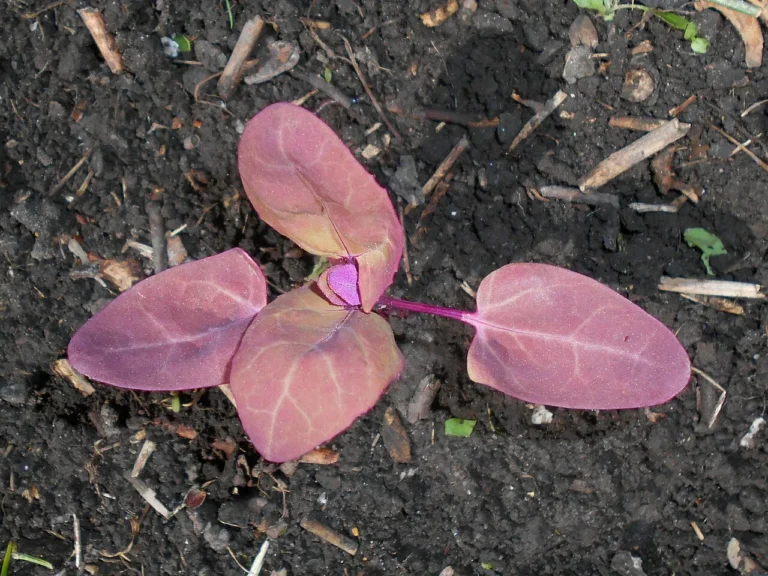Saskatoon Berries: Growing Your Own Superfruit
Saskatoon berries, often regarded as one of nature’s hidden gems, are not only a delight for gardeners to grow but also a versatile and nutritious addition to any gourmet’s pantry. These berries, with their sweet, nutty flavour, resemble blueberries in appearance but belong to the Amelanchier genus, which sets them apart with unique characteristics. Whether you’re an avid gardener curious about adding these berries to your collection or a culinary enthusiast eager to explore new flavours, this guide offers everything you need to know about Saskatoon berries.
What Are Saskatoon Berries?
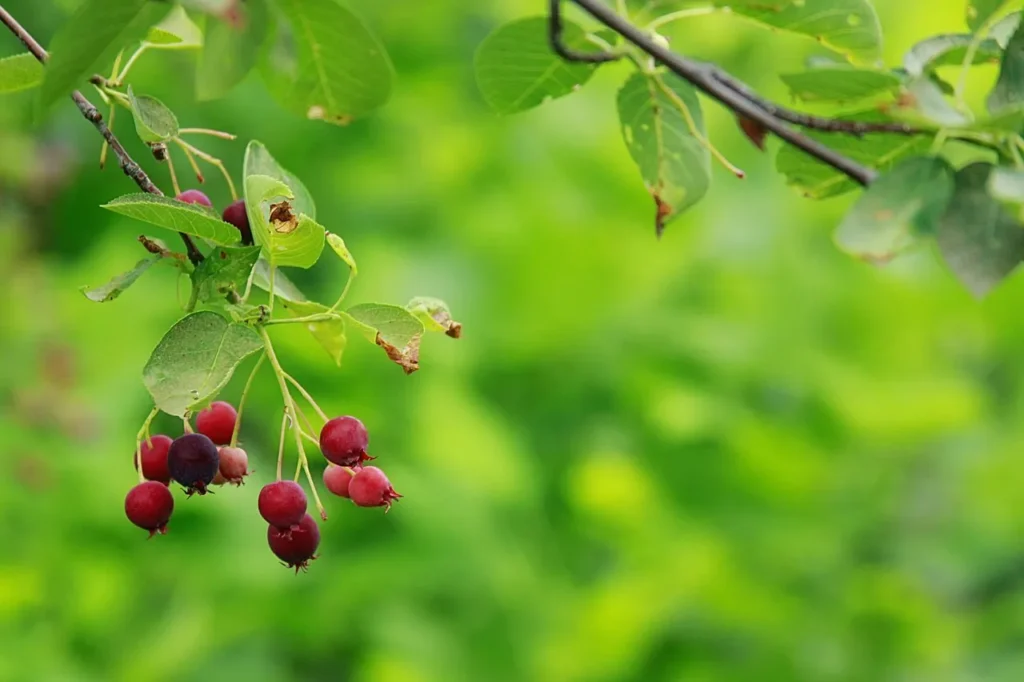
Saskatoon berries (Amelanchier alnifolia) are deciduous shrubs native to North America, thriving in USDA zones 2 through 7. They bloom with white flowers in early spring, followed by the production of small, round, edible berries in early to mid-summer. These berries pack a powerful nutritional punch, rich in antioxidants, vitamins, and minerals.
How to Grow Saskatoon Berries
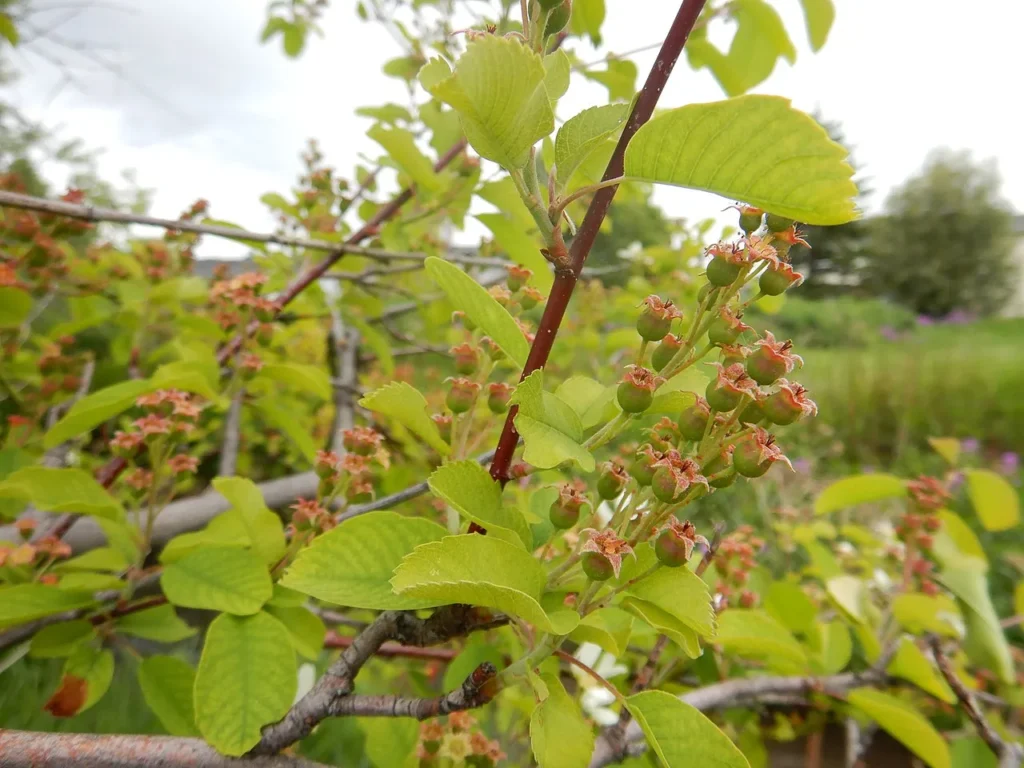
Choosing the Right Location
Saskatoon berries thrive in locations that receive full sun to partial shade. While they can tolerate a range of soil types, they prefer well-drained soil with a pH between 6.0 and 7.5. If your soil is heavy clay or sandy, amend it with organic matter to improve drainage and fertility. Selecting the right spot is crucial for the health and productivity of your Saskatoon berry bushes.
Soil Preparation and Planting
Before planting, it’s important to prepare the soil by incorporating a generous amount of compost or well-rotted manure to enrich it. Saskatoon berry bushes can be planted in the fall or early spring. When planting multiple bushes, space them about 4 to 6 feet apart to allow for adequate air circulation and growth. Dig a hole twice as wide and just as deep as the root ball, place the plant in the hole, and fill it with soil. Water thoroughly after planting to settle the soil around the roots.
Watering and Mulching
Consistent watering is vital during the first year after planting to help establish a strong root system. Water the plants deeply once a week, allowing the soil to dry slightly between waterings. To help retain soil moisture and suppress weeds, apply a 2 to 3-inch layer of organic mulch around the base of the plants, keeping it a few inches away from the stems to prevent rot.
Fertilization
Saskatoon berries do not require heavy fertilization. An annual application of a balanced, slow-release fertilizer in early spring is usually sufficient to support growth and fruiting. Avoid over-fertilizing, as this can lead to lush foliage at the expense of fruit production.
Pruning
Proper pruning is essential for maintaining healthy Saskatoon berry bushes and maximizing fruit production. Prune in late winter or early spring before new growth begins. Remove any dead, damaged, or diseased branches, as well as any that are crossing or growing inward. Thinning the center of the bush will improve air circulation and light penetration, which is key to reducing disease risk and promoting even ripening of the berries.
Pest and Disease Management
Saskatoon berries are relatively resistant to pests and diseases, but it’s important to monitor your plants regularly. Common issues include powdery mildew, rust, and leaf spot diseases. To prevent these, ensure good air circulation through proper planting and pruning practices. Insect pests, such as aphids and leafrollers, can be managed through manual removal or the use of appropriate organic insecticides.
Harvesting
Saskatoon berries are typically ready for harvest in early to mid-summer, depending on your climate. The berries should be deep purple and fully ripe for the best flavour. Gently twist the berries off the branches, being careful not to damage the plant. Fresh Saskatoon berries can be stored in the refrigerator for up to a week, or they can be frozen, dried, or processed into jams and jellies for longer storage.
Nutritional Benefits
Saskatoon berries are not only delicious but also offer a variety of health benefits. They are high in fiber, protein, and antioxidants, which can help fight inflammation and protect against chronic diseases. The berries also contain high levels of vitamins C and A, along with minerals such as magnesium, manganese, and iron.
Culinary Uses
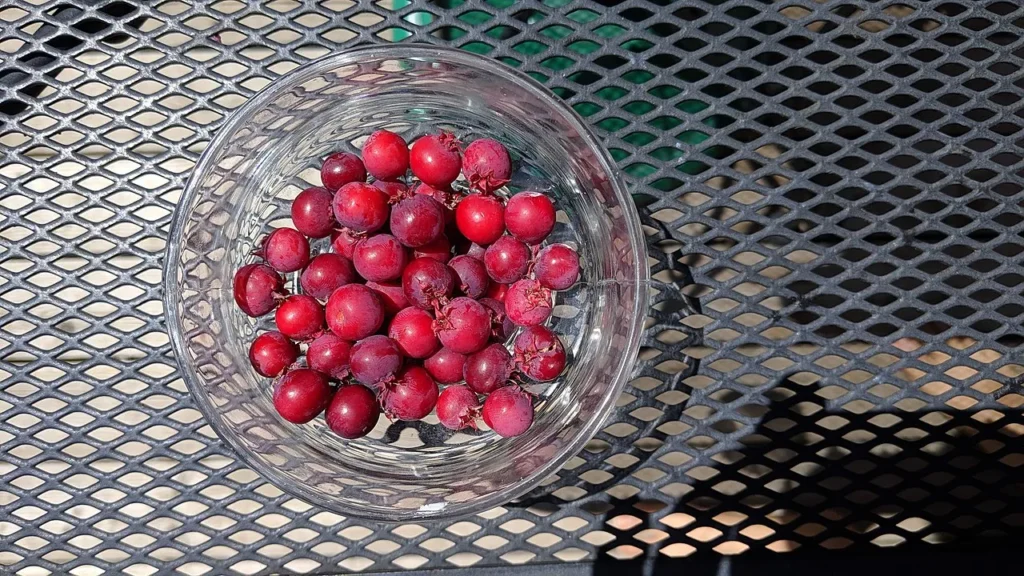
The versatility of Saskatoon berries makes them a fantastic ingredient in both sweet and savoury dishes. Here are some culinary ideas to explore:
- Jams and Preserves: Their high pectin content makes Saskatoon berries ideal for making jams, jellies, and preserves.
- Baked Goods: Incorporate Saskatoon berries into muffins, pies, and pancakes for a burst of flavour.
- Sauces and Glazes: Create savoury sauces and glazes for meats, particularly game and poultry, to add a unique, sweet-tart component to your dishes.
- Smoothies and Cocktails: Blend Saskatoon berries into smoothies or muddle them in cocktails for a nutrient-rich drink.
Saskatoon Berries FAQ: Your Questions Answered
What climates are best for growing Saskatoon berries?
Saskatoon berries are quite hardy and can thrive in USDA zones 2 through 7. They can tolerate cold winters and prefer regions with distinct seasons for optimal growth and fruiting.
How often should I water Saskatoon berry bushes?
During the first year, water your Saskatoon berry bushes deeply once a week to help establish a strong root system. After they are established, you can reduce watering, but ensure they receive at least 1 inch of water per week through rainfall or irrigation, especially during dry periods.
Do Saskatoon berries require cross-pollination?
While Saskatoon berries can self-pollinate, planting more than one variety can improve fruit set and yield due to cross-pollination. It’s a good practice to plant two or more varieties close to each other.
How can I tell when Saskatoon berries are ripe?
Ripe Saskatoon berries will be deep purple in colour and easily come off the stem. Taste a few berries before harvesting in bulk to ensure they have reached their full sweetness.
Can Saskatoon berries be grown in containers?
Yes, Saskatoon berries can be grown in large containers if space is limited. Ensure the container is large enough to accommodate the root system and has good drainage. Container-grown plants will require more frequent watering and fertilization than those planted in the ground.
How do I protect Saskatoon berry bushes from birds?
Birds can be attracted to the ripe berries. To protect your harvest, consider using bird netting over the bushes or hanging reflective tapes to deter them.
Additional Resources for Saskatoon Berry Enthusiasts
Online Gardening Guides
- The Spruce: Provides a comprehensive guide to growing, caring for, and harvesting Saskatoon berries, suitable for beginners and experienced gardeners alike.
- Gardening Know How: This site offers easy-to-understand gardening advice and how-to information for gardeners of all levels. Their extensive collection of articles covers the cultivation and care of a vast array of plants, including Saskatoon berries, with practical tips on everything from planting to harvest.
Books on Berry Gardening
- “Growing Berries and Fruit Trees in the Pacific Northwest” by Tara Austen Weaver: A guide that covers a variety of berries, including Saskatoons, with specific tips for the Pacific Northwest climate.
- “The Berry Grower’s Companion” by Barbara L. Bowling: Offers detailed information on growing various berries, with a section dedicated to Saskatoon berries, covering everything from planting to pest management.
Local Gardening Workshops
- Local Cooperative Extension Services: Many universities and agricultural colleges offer extension services that provide workshops, planting guides, and gardening advice specific to your local area.
- Gardening Clubs and Societies: Joining a local gardening club or society can connect you with experienced growers who can offer tips and advice on growing Saskatoon berries and other plants.
Gardening YouTube Channels
- Garden Answer: Features a wide range of gardening tutorials and project ideas, including tips on growing berries and other fruit plants.
- Huw Richards: Offers practical, organic gardening advice with a focus on growing fruit and vegetables, including innovative ways to care for berry bushes.
Final Thoughts
Saskatoon berries offer a delightful combination of beauty, taste, and nutrition, making them a worthy addition to any garden or kitchen. With proper care, these hardy shrubs can provide a bountiful harvest of berries year after year, enriching your table with flavours that are as unique as they are delicious. Whether you’re crafting a homemade pie, whipping up a healthful smoothie, or experimenting with savoury sauces, Saskatoon berries bring a touch of gourmet to your culinary creations.

